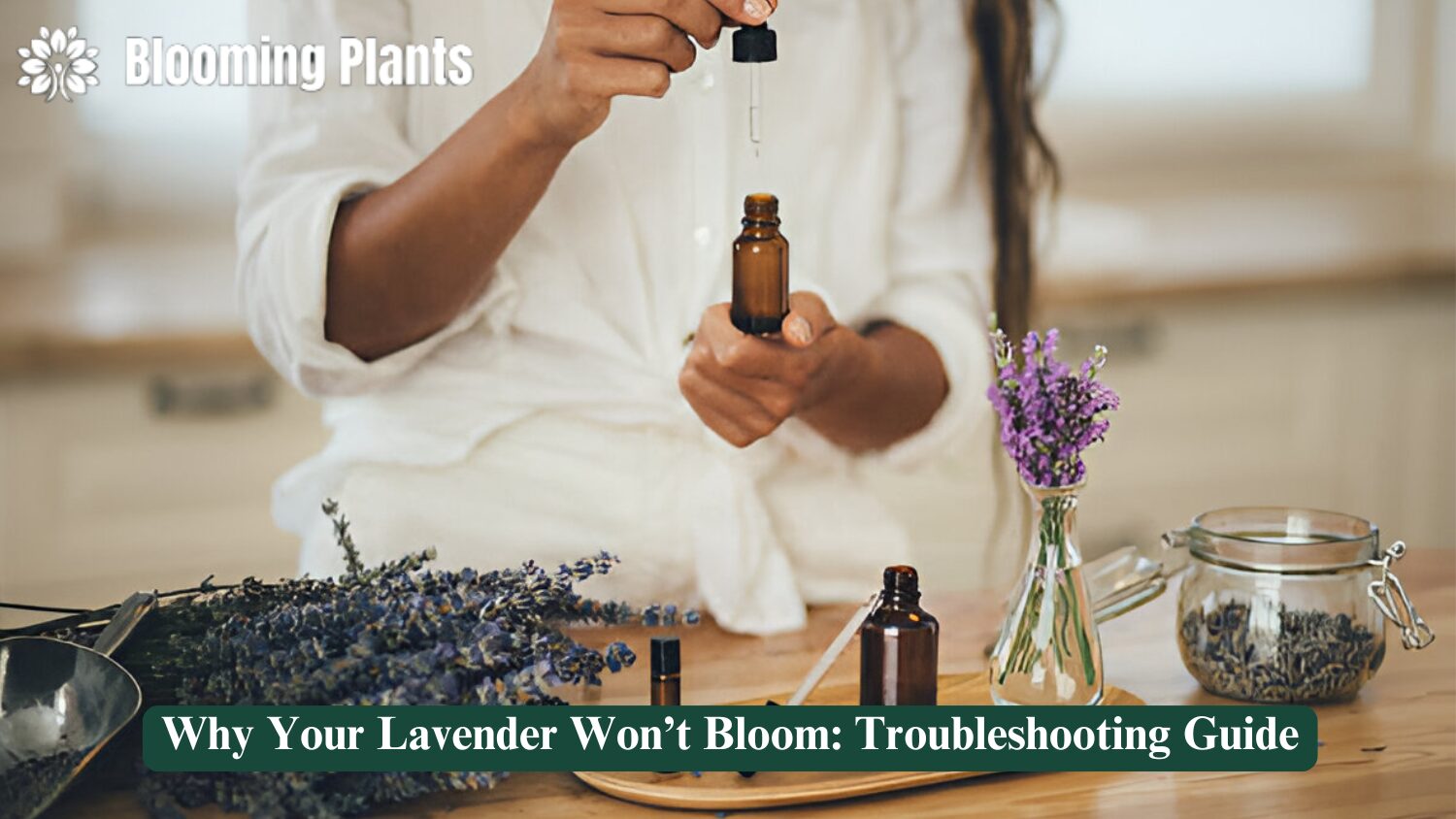Lavender plants are beloved for their fragrant flowers and versatility in gardens, but when they refuse to bloom, it can be frustrating. This guide will uncover the reasons why your lavender plant might not be blooming and provide actionable solutions to restore its vibrant blossoms.
Understanding Lavender and Its Blooming Cycle
Before diving into specific issues, it’s essential to understand how lavender grows and blooms.
Lavender’s Growth and Blooming Basics
- Botanical Name: Lavandula
- Blooming Seasons: Late spring to early summer; some varieties may bloom again in late summer or fall.
- Optimal Conditions: Lavender thrives in Mediterranean-like climates, characterized by plenty of sunlight, well-drained soil, and low humidity.
The blooms depend on environmental factors and the care given during the growing season. A lack of flowers usually signals that one or more critical growth conditions are not being met.
Key Lavender Types and Their Differences in Blooming
Different lavender species have varying blooming habits.
| Lavender Type | Bloom Time | Notes |
| English Lavender | Early to mid-summer | Most fragrant and cold-tolerant. |
| French Lavender | Early summer | Tolerates heat but is less hardy in cold. |
| Spanish Lavender | Spring to early summer | Distinctive tufted blooms. |
Common Reasons Lavender Isn’t Blooming (And How to Fix Them)
Lack of Sufficient Sunlight
Lavender plants need at least six to eight hours of direct sunlight daily. Without this, they struggle to bloom.
Solution:
- Relocate potted lavender to a sunnier spot.
- If planted in the ground, consider pruning nearby plants or trees that may be shading the lavender.
Improper Pruning Practices
Pruning lavender incorrectly or not at all can prevent blooming. Overgrown plants focus energy on foliage rather than flowers.
Tips for Proper Pruning:
- Timing Matters: Prune after the first bloom in late summer and again lightly in spring.
- How to Prune:
- Use sharp shears to trim about one-third of the plant, avoiding cutting into woody stems.
- Why It Works: Pruning encourages new growth, which promotes flowering.
Overwatering or Poor Drainage
Lavender roots are highly susceptible to rot if left in soggy soil, which hinders flowering.
Identifying overwatering symptoms:
- Leaves turning yellow or mushy.
- Soil feels consistently wet to the touch.
Solutions:
- Improve Drainage: Mix sand or gravel into heavy soil.
- Watering Schedule: Water once the top inch of soil feels dry.
| Season | Watering Frequency |
| Spring | Every 7–10 days (if dry) |
| Summer | Every 5–7 days in extreme heat |
| Fall/Winter | Rarely; only if drought persists |
Nutrient Imbalances
Lavender thrives in nutrient-poor soils. Excessive fertilizer, especially nitrogen, encourages foliage growth at the expense of flowers.
Solution:
- Avoid feeding lavender unless absolutely necessary.
- If fertilizing, use a low-nitrogen, high-phosphorus fertilizer to promote blooming.
Wrong Soil Type or pH Levels
Lavender prefers alkaline to neutral soils with a pH of 6.5–8.0. Acidic soils inhibit flower production.
Testing and Adjusting Soil pH:
- How to Test: Use a soil pH kit or meter.
- How to Adjust: Add agricultural lime to raise pH if it’s too acidic.
Crowding and Poor Air Circulation
Lavender plants need space to thrive. Overcrowding traps humidity, promoting fungal diseases that hinder blooming.
Solutions:
- Plant lavender 2–3 feet apart to allow airflow.
- Regularly weed around plants to reduce competition for resources.
Lavender Blooming Troubleshooting Checklist
| Problem | Symptom | Solution |
| Insufficient sunlight | Sparse or no blooms | Move to a sunnier spot |
| Overwatering | Yellow, mushy leaves | Reduce watering; improve drainage |
| Poor pruning | Overgrown plant with no flowers | Prune regularly, avoiding woody stems |
| Acidic soil | Stunted growth, no blooms | Adjust pH with lime |
| Overcrowding | Fungal issues, weak plants | Space plants properly |
Case Study: How I Revived My Non-Blooming Lavender
“I planted my lavender in a shady corner of my yard, thinking it could tolerate partial sun. After months with no flowers, I did some research and realized sunlight was the issue. I transplanted it to a sunny spot, improved the soil with sand for better drainage, and pruned it back. Within a few weeks, I saw new growth, and by summer, my lavender was blooming beautifully!”
This real-life example highlights how addressing specific issues can make a dramatic difference.
Expert Tips for Maximizing Lavender Blooms
- Companion Planting: Pair lavender with plants like rosemary or thyme, which share similar growing conditions.
- Mulching: Use light-coloured gravel to reflect sunlight onto the plant.
- Regular Inspections: Check for pests like aphids or fungal infections, which can weaken plants and reduce flowering.
Conclusion: Bring Back the Blooms
Getting your lavender plant to bloom isn’t impossible—it just takes some detective work and adjustments. From ensuring proper sunlight to improving soil conditions, these tips will help restore your lavender’s vibrant flowers. Remember, a thriving lavender plant rewards you with more than just beauty—it provides calming fragrance, culinary uses, and even pest-repelling properties.
Take the time to address its needs, and you’ll enjoy a blooming, fragrant lavender garden year after year.
FAQ
Can lavender bloom in partial shade?
While lavender prefers full sun, some varieties tolerate light shade. However, expect fewer flowers.
How long does it take for lavender to bloom after planting?
Lavender typically blooms in its second growing season. Patience is key when nurturing young plants.
What are signs that my lavender is healthy but not blooming?
Healthy lavender will have silvery-green foliage, sturdy stems, and no signs of pests or disease. Non-blooming indicates environmental or care issues rather than poor plant health.

